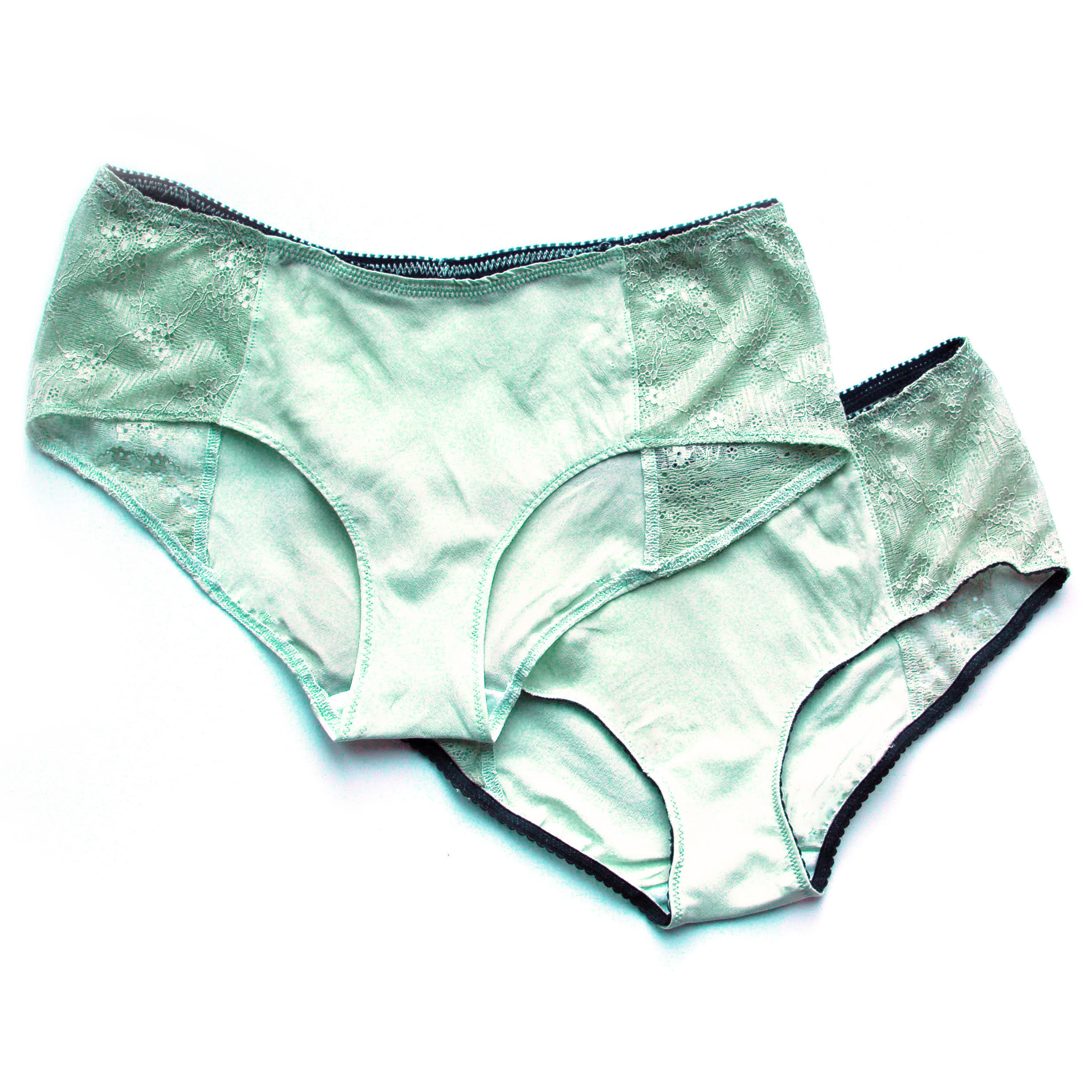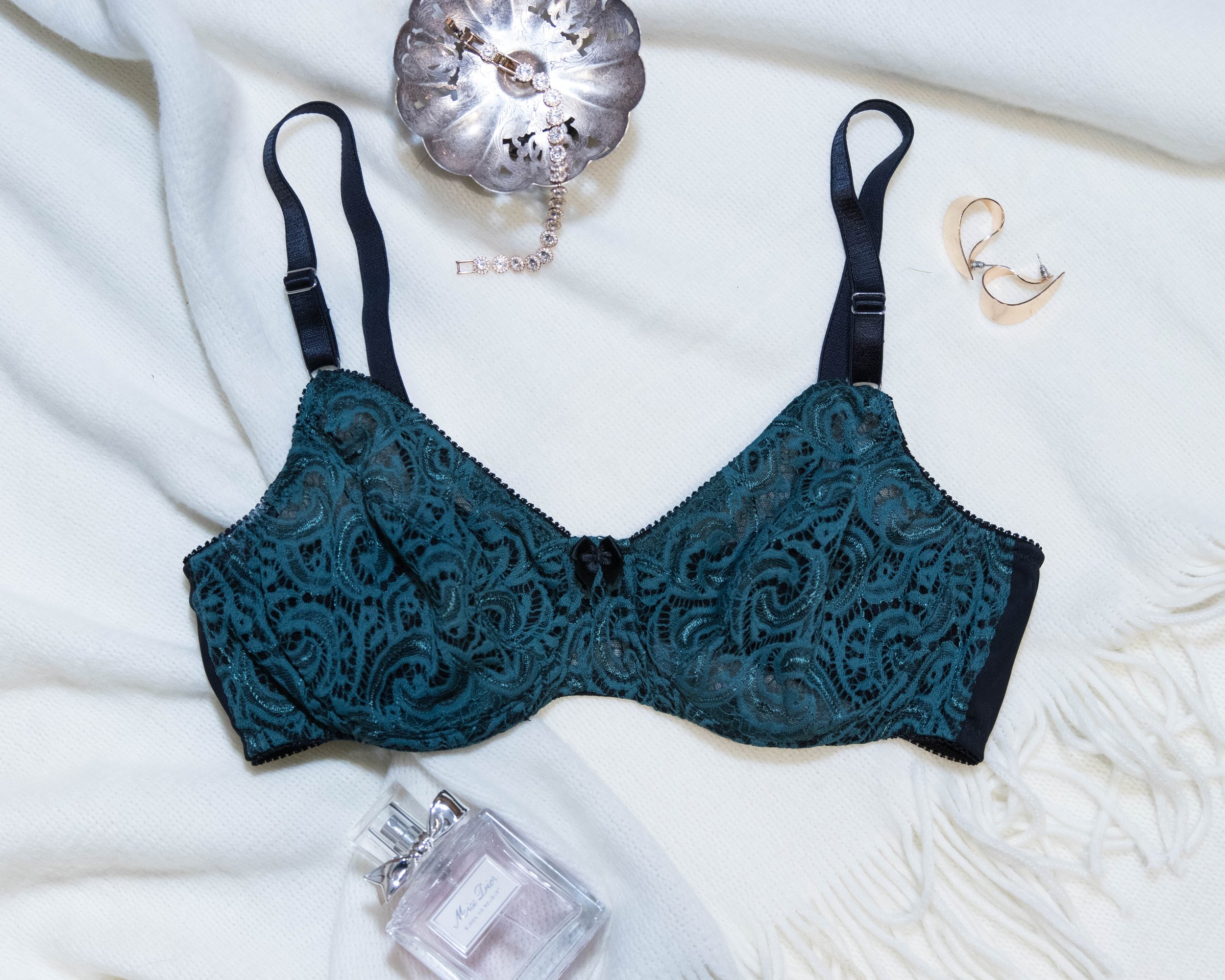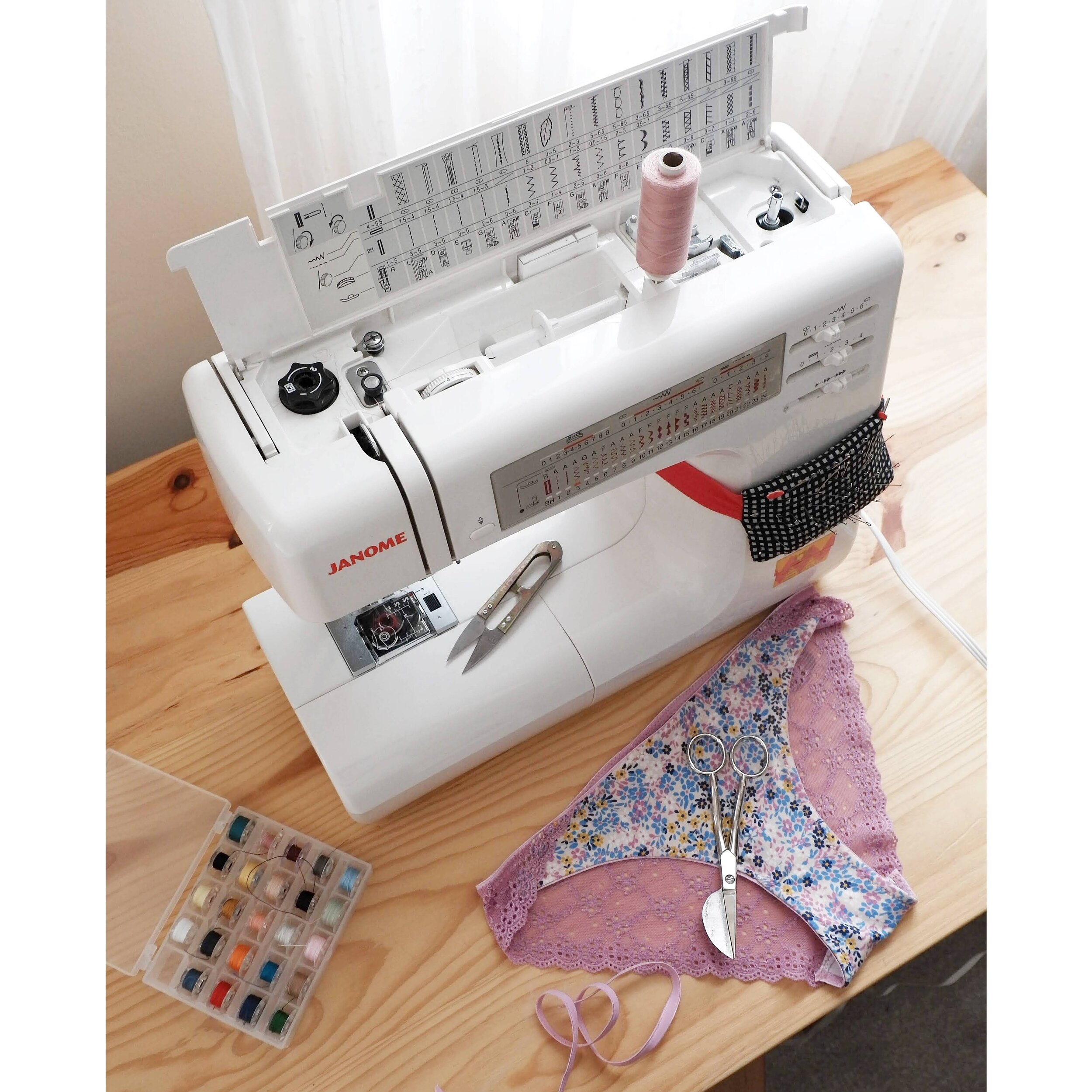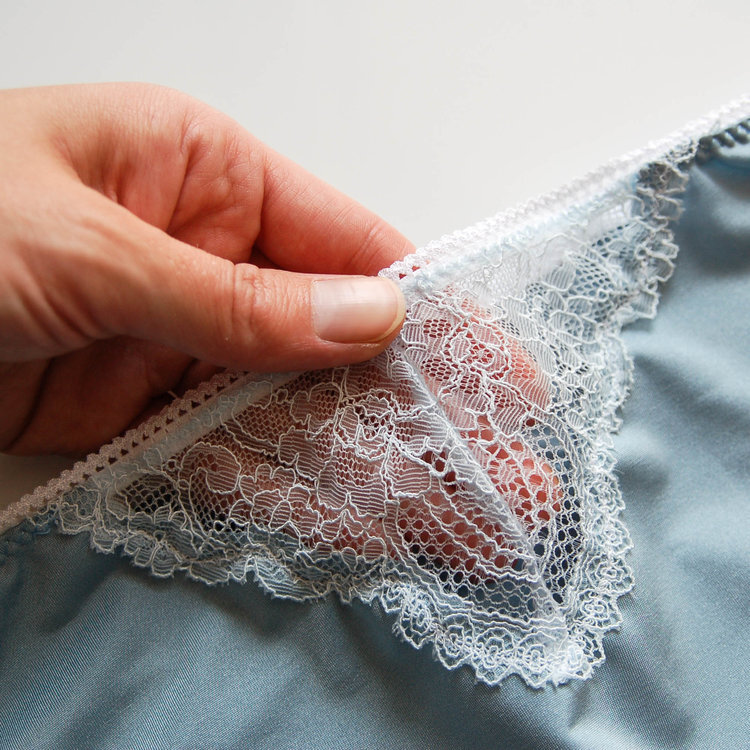Hola, es la hora de presentaros mi último patrón de lencería, aquí va Lili! Es un patrón de braguita tipo tanga que viene (como de costumbre en mis patrones) en dos versiones, tanto para telas de punto como para encajes elásticos.
Hey, it’s time to presnt you my newest lingerie sewing pattern: here goes Lili! It’s a pantie pattern with a thong style that comes (as usually in my patterns) both in knit and stretch lace versions.
Ya era hora de añadir un corte de este estilo a mi colección de patrones! La versión de punto es sencillo y lleva elásticos en la cinturilla y en las aberturas de las piernas, podéis usar todo tipo de diferentes telas de punto para coserlas, eso sí, tienen que tener elasticidad.
It was about time to add a style like this to my lingerie pattern collection! The knit version is simple and has elastic sewn into the waist and leg openings. You can use many different knit fabrics to sew this pair, as long as the fabric has stretch in it.
La versión de encaje es realmente bonito ya que se ve la puntilla tanto en la parte delantera como en la trasera. Ya que este corte “no cubre mucho”, jaja, es ideal para usar los restos de encajes y telas que tengáis…seguramente las piezas os salen de recortes bastante pequeños.
The stretch lace version is really pretty as it has visible scalloped lace edge both on the front and back pieces. As this style “doesn’t cover a lot”, haha, it’s perfect for using up your fabric and lace scraps…I’m sure the pieces will fit onto quite small fabric pieces.
Como siempre el patrón es solo un punto de partida y podéis jugar con varios tipos de materiales para crear el par que más os guste. En este ejemplo añadí unos recortes de puntilla para la versión 1 y que muy bonito. Podéis ver éste tutorial para saber cómo hacerlo.
As always the pattern itself is only the starting point, you can play around with many supplies to make a very special pair just for yourself. I used small lace pieces for this pair made with version 1 and the result is beautiful. You can see this tutorial to see how to do it.
Y otra versión muy mona la hice usando puntilla elástica para las aberturas de las piernas. Para hacerlo podéis mirar éste tutorial. Usé la versión 2 del patrón como si fuera encaje y lo único diferente que hice fue primero unir los laterales de las piezas de punto en vez de unir los centros delantero y espalda. Así puedes colocar allí la puntilla elástica y seguir trabajando como si fueran piezas de encaje, es muy fácil!
And this other pair I made with narrow stretch lace for the leg openings. You can do the same following this tutorial. I used the vesion 2 as it would be lace I was working with. The only different thing I did was joining first the side seams instead of the front and back center seams. That way I could sew on the stretch lace first and then treat the pieces as lace, it’s very simple!
Normalmente no soy muy de lacítos pero esta vez les puse a casi todas las muestras uno porque me gustaba este pequeño toque cuqui, jaja. Ya sabéis que en la tienda tenéis los kits de braguitas por si queréis tener todos los materiales en un mismo pack o también podéis comprar encaje por metros y elástico fino para coser vuestro par. Las puntillas elásticas que vienen en muchos colores también lo tenéis disponibles allí. Espero que os guste este nuevo patrón! Haré un post de inspiración también para que os animéis más a coseros un par de Lilis! Y mientras tanto…pues a seguir trabajando porque lo siguiente que sacaré está ya casi para mandarlo a las testers…qué ganas de enseñaroslo!!!!
Normally I’m not a big fan of bows but this time I added little bows to almost all my samples as they looked so cute, hehe. As you know there are pantie kits in my shop if you want to get all the materials to sew your own pair of panties. You can also get the stretch lace per meter and combine it with narrow elastics and there’s quite a big section of narrow lace trim. I hope you like the new pattern! I’ll make a inspiration post for you too so you can see some cool ideas for thong style panties like Lili! And in the meantime…I’ll keep working as my next pattern is soon ready to send to the testers…I’m really exited to show it to you!!!










































































